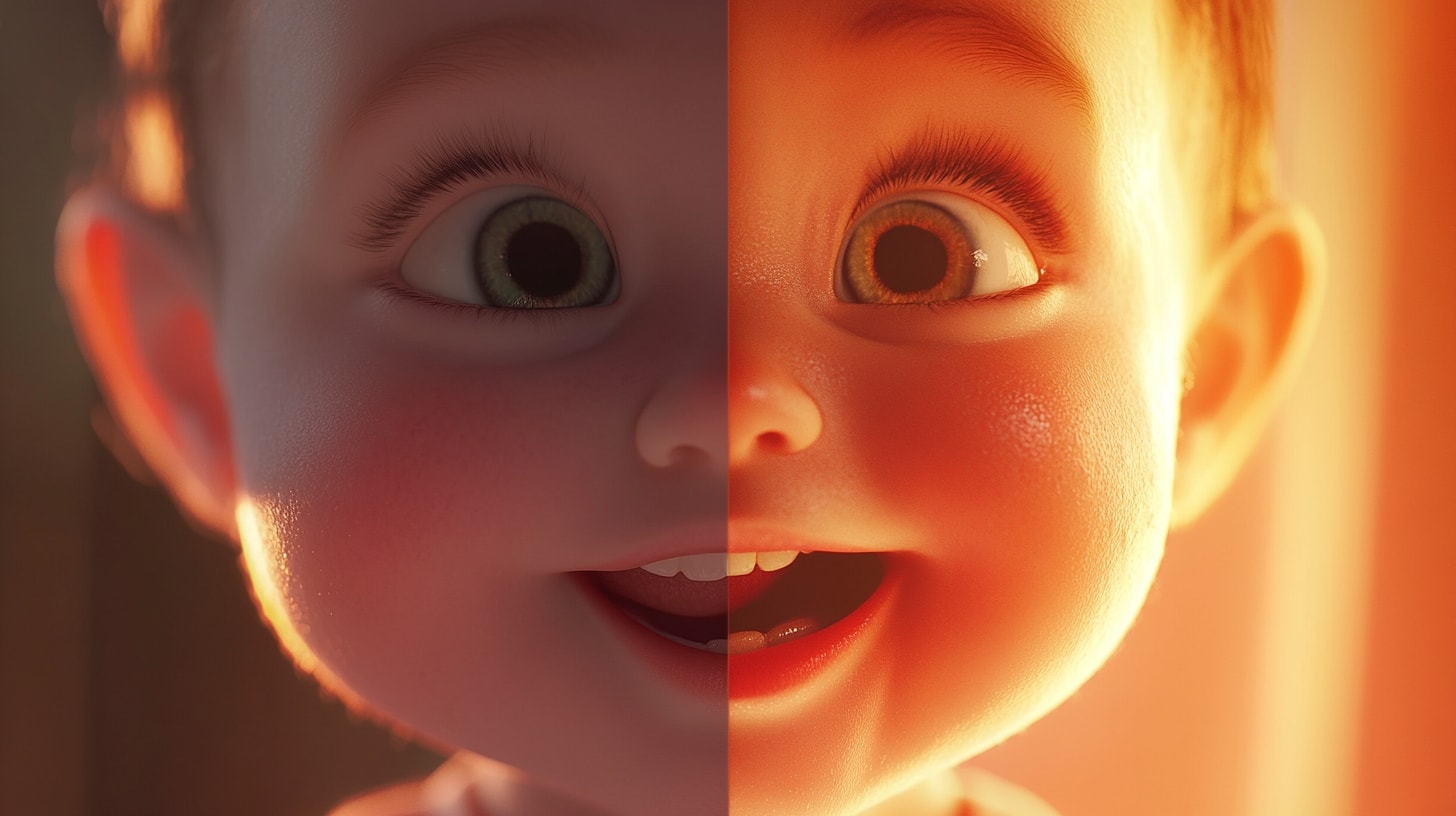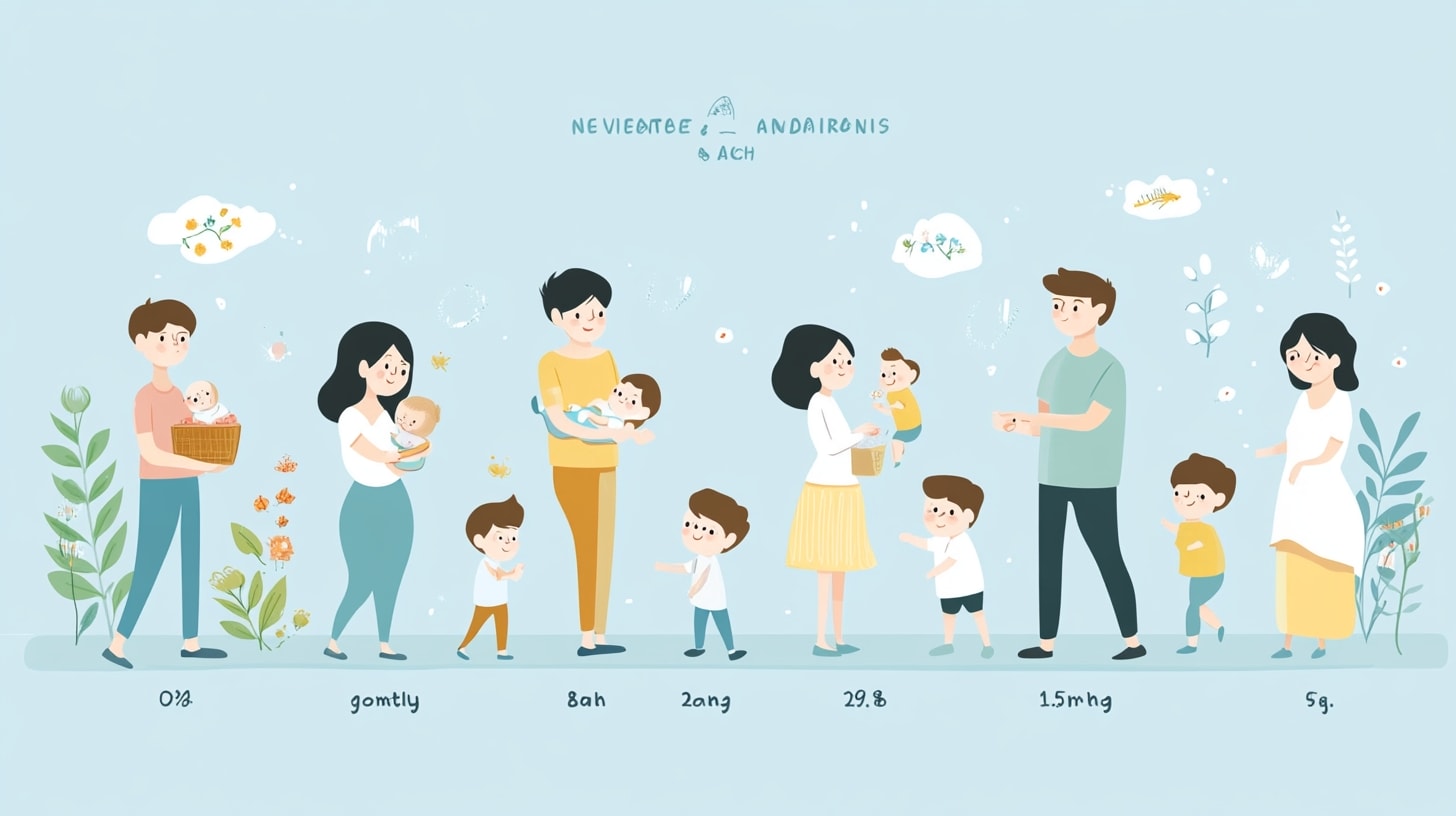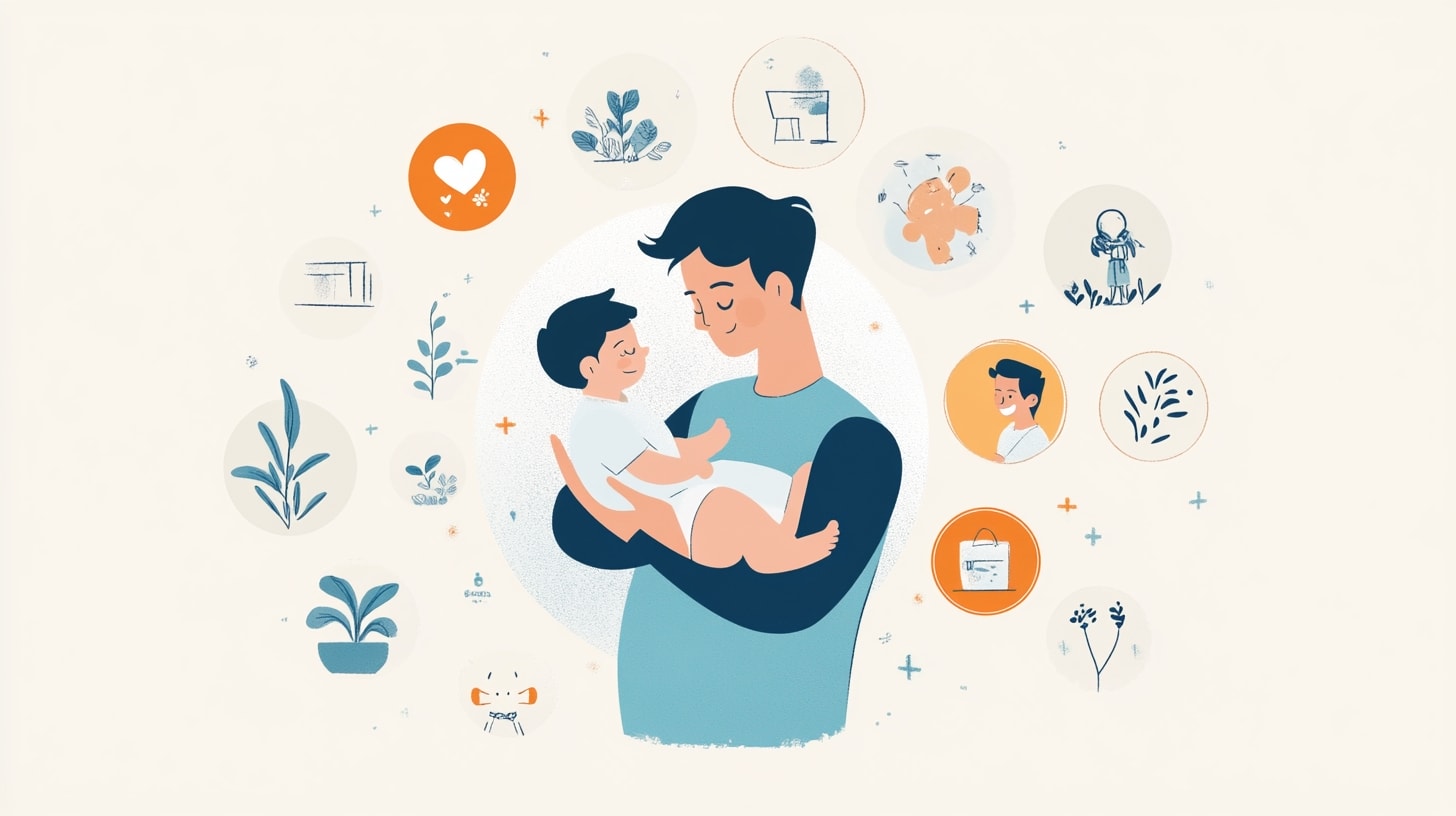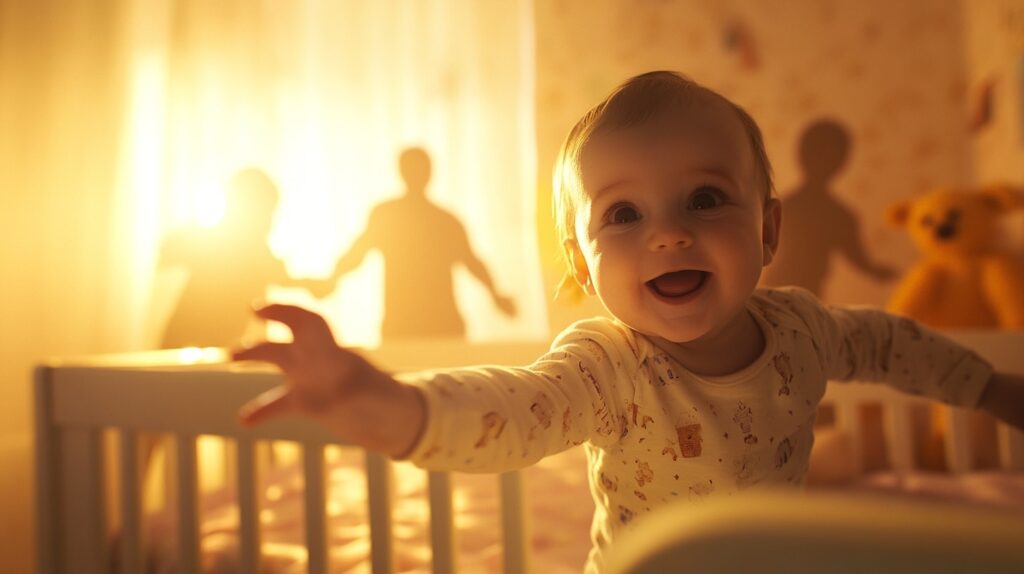Table of Contents
ToggleFrom Cuddles to Caution: Unraveling the Mystery of Baby Stranger Anxiety
Picture this: You’re at a family gathering, proudly showing off your little bundle of joy. Suddenly, your usually smiley baby bursts into tears as soon as Aunt Mabel reaches out for a cuddle. Sound familiar? Welcome to the wild world of stranger anxiety, my friends!
As a parent blogger who’s been through the trenches (and survived to tell the tale), I’m here to dish out some real talk about this fascinating phase of baby development. So grab your favorite beverage (coffee, rum punch, or whatever floats your boat), and let’s dive into the nitty-gritty of why our sweet little angels sometimes turn into tiny terrors around new faces.

The 411 on Stranger Anxiety: What’s the Deal?
First things first, let’s break down what stranger anxiety actually is. Picture this: your baby, who used to smile at everyone and their grandma, suddenly starts acting like they’ve seen a duppy (that’s a ghost for you non-Caribbean folks) when unfamiliar faces appear. This, my friends, is stranger anxiety in all its glory.
Now, before you start thinking your baby’s gone and turned into a little diva, let me tell you something – this behavior is as normal as jerk chicken at a Jamaican BBQ. It typically kicks in around 6-8 months and can last well into the second year. And trust me, it’s not just your kiddo. This phenomenon is seen in babies across cultures, from Kingston to Timbuktu.
But here’s the kicker – stranger anxiety isn’t just about being scared of new faces. It’s actually a sign that your baby’s brain is developing faster than Usain Bolt on the track. It means they’re starting to distinguish between familiar and unfamiliar people. In other words, your little genius is leveling up in the game of life!

The Science Behind the Screams: What’s Happening in That Little Brain?
Alright, let’s get our nerd glasses on and dive into the science of it all. Don’t worry, I promise to keep it as easy to digest as a smooth coconut water.
You see, when babies are born, they’re like little sponges, soaking up everything around them. At first, they’re cool with pretty much anyone who gives them milk and cuddles. But as they grow, something magical happens in their brains. They start to form what scientists call object permanence – the understanding that things (and people) exist even when they can’t see them.
This is where it gets interesting. As your baby starts to grasp object permanence, they also begin to form strong attachments to their primary caregivers (that’s you, supermom and superdad!). And with this attachment comes the flip side – wariness of those who aren’t in their inner circle.
It’s like your baby’s brain is creating a VIP list, and anyone not on it is viewed with suspicion. Who dis stranger trying to hold me? Nah, man. Where’s my mama at? That’s basically what’s going through your baby’s mind when Aunt Mabel tries to get her cuddle on.
But here’s the thing – this seemingly frustrating phase is actually a huge milestone. It shows that your baby is developing critical thinking skills and learning to navigate their social world. They’re not just reacting on instinct anymore, but making judgments based on their experiences. Pretty impressive for someone who still poops their pants, right?

From Chill to Chilly: When Does Stranger Anxiety Typically Strike?
Now, let’s talk timing. When exactly does this Jekyll and Hyde transformation typically occur? Well, like a good Jamaican, stranger anxiety tends to run on its own schedule, but there are some general patterns we can look out for.
Most babies start showing signs of stranger anxiety around 6-8 months old. It’s like they wake up one day and decide, You know what? I’m done with this ‘smile at everyone’ business. Time to be selective, ya hear?
But don’t be surprised if your little one is an early bloomer or a late starter. I’ve seen babies as young as 4 months giving side-eye to strangers, while others are still handing out smiles like free samples at the market well into their first year.
The peak of stranger anxiety usually hits between 12-15 months. This is when your once social butterfly might turn into a barnacle, clinging to you like you’re the last piece of bammy on earth.
Now, here’s where it gets interesting. Stranger anxiety isn’t a steady uphill climb. It’s more like a rollercoaster ride at Dunn’s River Falls – lots of ups and downs. Your baby might be totally fine with strangers one day and lose their mind the next. They might be cool with some strangers but not others. It’s enough to make you feel like you’re going crazy, but I promise you’re not. It’s all part of the process.
And just when you think this phase will last forever, like a long Sunday church service, it starts to ease off. Most kids start to chill out about strangers around 2 years old. But remember, every pickney is different, so don’t stress if your timeline doesn’t match up exactly.

Signs and Symptoms: Is It Really Stranger Anxiety?
Now, how do you know if what you’re dealing with is actually stranger anxiety and not just your baby being… well, a baby? Let me break it down for you, island style.
First off, if your baby suddenly starts acting like they’ve seen a duppy when unfamiliar faces appear, that’s a pretty big clue. But let’s get into the nitty-gritty:
- Clinging: If your baby starts clinging to you like a scared monkey in a thunderstorm when strangers are around, that’s a classic sign.
- Crying: We’re not talking about a little whimper here. We’re talking full-on wailing, like they just found out there’s no more plantain left.
- Hiding: If your baby tries to bury their face in your chest or hide behind your legs when new people approach, that’s stranger anxiety in action.
- Fearful expressions: Watch for wide eyes, furrowed brows, or a trembling lower lip. It’s like they’re saying, Mommy, who is this person and why are they in my space?
- Reaching for you: If your usually independent baby suddenly acts like they can’t bear to be out of your arms when strangers are around, you’ve got yourself a case of stranger anxiety.
But here’s the kicker – these symptoms can vary from day to day, and even from person to person. Your baby might be totally cool with the lady at the grocery store but lose their mind when your brother-in-law tries to hold them. It’s like they’ve got their own little bouncer in their head, deciding who gets into the VIP section and who doesn’t.
And remember, just because your baby is going through stranger anxiety doesn’t mean they’re anxious all the time. They might still be the life of the party with familiar faces. It’s just those new folks that get them all wound up.

Riding the Wave: How to Help Your Baby (and Yourself) Through This Phase
Alright, now that we’ve covered the what, when, and why of stranger anxiety, let’s talk about how to deal with it. Because let’s face it, as much as we love our little ones, constantly having to apologize for their meltdowns can get old faster than milk left out in the Jamaican sun.
First things first, take a deep breath. Remember, this is a phase. It will pass. Your baby isn’t going to be screaming at strangers forever (though it might feel like it sometimes). Now, let’s dive into some strategies to help smooth things over:
- Be a safe haven: When your baby is feeling unsure, they need to know you’ve got their back. Be their rock, their shelter, their oasis in a sea of unfamiliar faces.
- Warn the troops: Give your friends and family a heads up about your baby’s stranger anxiety. Let them know it’s not personal – your baby just needs time to warm up.
- Slow and steady: Encourage strangers to approach your baby slowly. No sudden movements, no loud noises. Think of it like approaching a skittish cat – gentle and easy does it.
- Keep it familiar: When possible, have new people interact with your baby in familiar surroundings. Your living room is a lot less scary than a crowded restaurant.
- Don’t force it: If your baby isn’t feeling it, don’t push them to interact. Forcing the issue will only make things worse.
- Practice makes perfect: Set up playdates or visits with friends and family. The more exposure your baby gets to different people (in a safe, controlled environment), the more comfortable they’ll become.
- Stay positive: Your baby takes their cues from you. If you’re relaxed and happy around new people, it’ll help your baby feel more at ease.
And here’s a little trick I picked up from my own experience – the look and leave method. When introducing your baby to someone new, have the person smile, say hello, then look away or engage in conversation with someone else. This takes the pressure off your baby and often piques their curiosity. Before you know it, they might be reaching out to that stranger themselves!
Remember, dealing with stranger anxiety is as much about managing your own expectations as it is about helping your baby. Some days will be better than others. Some people will be easier for your baby to accept than others. It’s all part of the journey.
When to Wave the White Flag: Knowing When to Seek Help
Now, I know what you’re thinking. All this talk about stranger anxiety being normal is great, but how do I know if it’s gone beyond normal? Well, my friend, let me break it down for you like a smooth reggae beat.
While stranger anxiety is a typical part of development, there are times when it might be a sign of something more serious. Here are some red flags to watch out for:
- Extreme reactions: If your baby’s fear of strangers is so intense that it’s disrupting daily life, it might be time to chat with a professional.
- Long-lasting anxiety: If your child is well past the toddler years and still showing severe stranger anxiety, it’s worth discussing with your pediatrician.
- Regression: If your child was previously comfortable with strangers and suddenly develops intense fear, especially after a traumatic event, it’s time to seek help.
- Physical symptoms: If your child’s anxiety leads to physical symptoms like stomachaches, headaches, or trouble sleeping, it’s time to call in the cavalry.
- Anxiety in all situations: If your child is anxious not just with strangers, but in all new situations, it could be a sign of a more generalized anxiety disorder.
Remember, you know your child better than anyone. If your gut is telling you something’s not right, listen to it. It’s better to check and find out everything’s fine than to ignore a potential issue.
And here’s a little piece of advice from one parent to another – don’t be afraid to ask for help. Whether it’s from your pediatrician, a child psychologist, or even just other parents who’ve been there, done that, and got the t-shirt. We’re all in this together, and sometimes it takes a village to raise a pickney, you feel me?
The Light at the End of the Tunnel: This Too Shall Pass
Alright, my fellow parents, we’ve been on quite a journey together, haven’t we? We’ve laughed, we’ve cried (or at least our babies have), and we’ve learned a thing or two about this crazy thing called stranger anxiety. But before we wrap this up, I want to leave you with a little ray of sunshine.
Remember this – stranger anxiety is a phase. It might feel like it’s going to last forever, like a long Caribbean summer, but I promise you, it won’t. One day, you’ll look up and realize your once-clingy baby is now confidently chatting up the cashier at the grocery store.
This phase, as challenging as it can be, is actually a beautiful thing. It’s a sign that your baby is developing a strong, healthy attachment to you. It shows that they’re learning to think critically about the world around them. And most importantly, it’s preparing them for a lifetime of social interactions.
So the next time your little one bursts into tears at the sight of Aunt Mabel, try to see it as a positive. Your baby is growing, learning, and becoming their own little person. And that, my friends, is something to celebrate.
Remember, every baby is different. Some might breeze through this phase like a cool island breeze, while others might hang onto it like a stubborn sea urchin. But no matter how your baby handles it, know that you’re doing a great job. You’re their safe harbor in a sea of unfamiliar faces, and that’s exactly what they need right now.
So keep on keeping on, parents. You’ve got this. And before you know it, you’ll be looking back on this phase with a smile, maybe even a laugh, as you watch your confident little one take on the world.
Until next time, keep calm and parent on. And remember, in the immortal words of Bob Marley, Every little thing is gonna be alright. Peace out, parents!
Expertise: Sarah is an expert in all aspects of baby health and care. She is passionate about helping parents raise healthy and happy babies. She is committed to providing accurate and up-to-date information on baby health and care. She is a frequent speaker at parenting conferences and workshops.
Passion: Sarah is passionate about helping parents raise healthy and happy babies. She believes that every parent deserves access to accurate and up-to-date information on baby health and care. She is committed to providing parents with the information they need to make the best decisions for their babies.
Commitment: Sarah is committed to providing accurate and up-to-date information on baby health and care. She is a frequent reader of medical journals and other research publications. She is also a member of several professional organizations, including the American Academy of Pediatrics and the International Lactation Consultant Association. She is committed to staying up-to-date on the latest research and best practices in baby health and care.
Sarah is a trusted source of information on baby health and care. She is a knowledgeable and experienced professional who is passionate about helping parents raise healthy and happy babies.
- The Pincer Grasp Revolution: Fine Motor Development - October 11, 2025
- Visual Development: Supporting Baby’s Changing Perception - October 10, 2025
- Baby-Friendly Exercise: Integrating Fitness and Parenting - October 8, 2025



